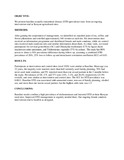Baseline STD prevalence in a community intervention trial of the female condom in Kenya

View/
Date
2000Author
Feldblum, PJ
Kuyoh, M
Omari, M
Ryan, KA
Bwayo, JJ
Welsh, M
Type
ArticleLanguage
enMetadata
Show full item recordAbstract
OBJECTIVE:
We present baseline sexually transmitted disease (STD) prevalence rates from an ongoing intervention trial at Kenyan agricultural sites.
METHODS:
After gaining the cooperation of management, we identified six matched pairs of tea, coffee, and flower plantations and enrolled approximately 160 women at each site. Six intervention sites received an information programme and distributed female and male condoms, while six control sites received male condoms only and similar information about them. At clinic visits, we tested participants for cervical gonorrhoea (GC) and Chlamydia trachomatis (CT) by ligase chain reaction on urine specimens, and Trichomonas vaginalis (TV) by culture. The study has 80% power to detect a 10% prevalence difference during follow up, assuming a combined STD prevalence of 20%, 25% loss to follow up and intracluster correlation coefficient (ICC) of 0.03.
RESULTS:
Participants at intervention and control sites (total 1929) were similar at baseline. Mean age was 33 years, the majority were married, more than half currently used family planning, 78% had never used male condoms, and 9% reported more than one sexual partner in the 3 months before the study. Prevalences of GC, CT, and TV were 2.6%, 3.2%, and 20.4% respectively (23.9% overall), and were similar at intervention and control sites. The ICC for STD prevalence was 0.0011. Baseline STD was associated with unmarried status, non-use of family planning, alcohol use, and more than one recent sexual partner, but the highest odds ratio was 1.5.
CONCLUSIONS:
Baseline results confirm a high prevalence of trichomoniasis and bacterial STD at these Kenyan rural sites. Improved STD management is urgently needed there. Our ongoing female condom intervention trial is feasible as designed.
URI
http://www.ncbi.nlm.nih.gov/pubmed/11221128http://www.ncbi.nlm.nih.gov/pmc/articles/PMC1744233/
http://erepository.uonbi.ac.ke:8080/xmlui/handle/123456789/57678
